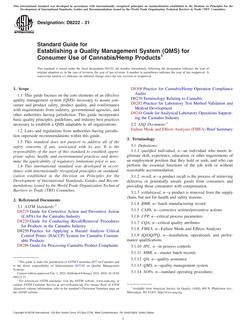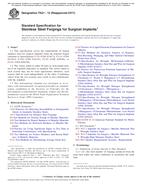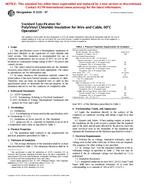1.1 These practices outline the procedures for obtaining intact block (cubical and cylindrical) soil samples.
1.2 Intact block samples are obtained for laboratory tests to determine the strength, consolidation, permeability, and other geotechnical engineering or physical properties of the intact soil.
1.3 Two sampling practices are presented. Practice A covers cubical block sampling, while Practice B covers cylindrical block sampling.
1.4 These practices usually involve test pit excavation and are limited to relatively shallow depths. Except in the case of large diameter (that is, >0.75 m) bored shafts of circular cross-section in unsaturated soils, for depths greater than about 1 to 11/2 meters or depths below the water table, the cost and difficulties of excavating, cribbing, and dewatering generally make block sampling impractical and uneconomical. For these conditions, use of a thin-walled push tube soil sampler (Practice D 1587), a piston-type soil sampler (Practice D 6519), or Hollow-Stem Auger (D 6151), Dennison, or Pitcher-type soil core samplers, or freezing the soil and coring may be required. This practice does not address environmental sampling; consult Guides D 6169 and D 6232 for information on sampling for environmental investigations.
1.5 Successful sampling of granular materials requires sufficient cohesion, cementation, or apparent cohesion (due to moisture tension (suction)) of the soil for it to be isolated in a column shape without undergoing excessive deformations. Additionally, care must be exercised in the excavation, preservation and transportation of intact samples (see Practice D 4220, Group D).
1.6 The values stated in SI units are to be regarded as the standard. No other units are included in this standard.
This practice offers a set of instructions for performing one or more specific operations. This document cannot replace education or experience and should be used in conjunction with professional judgment. Not all aspects of this practice may be applicable in all circumstances. This ASTM standard is not intended to represent or replace the standard of care by which the adequacy of a given professional service must be judged, nor should this document be applied without consideration of a project’s many unique aspects. The word “Standard” in the title of this document means only that the document has been approved through the ASTM consensus process.
This standard does not purport to address all of the safety concerns, if any, associated with its use. It is the responsibility of the user of this standard to establish appropriate safety and health practices and determine the applicability of regulatory requirements prior to use.
Product Details
- Published:
- 11/01/2007
- Number of Pages:
- 6
- File Size:
- 1 file , 150 KB
- Redline File Size:
- 2 files , 280 KB


